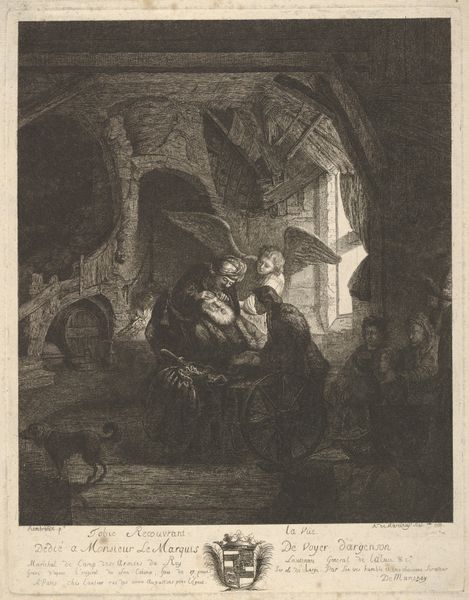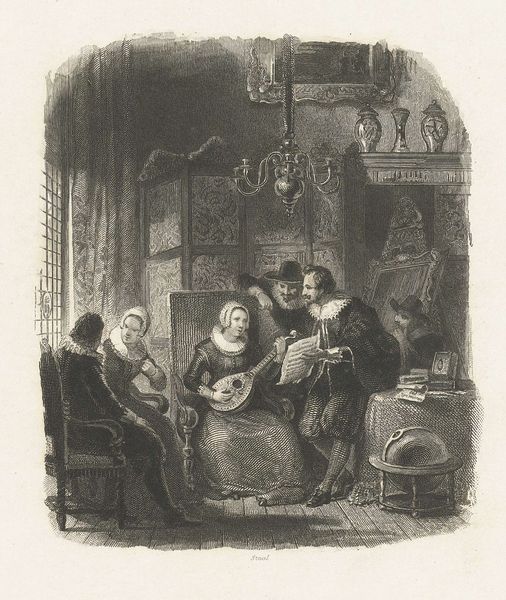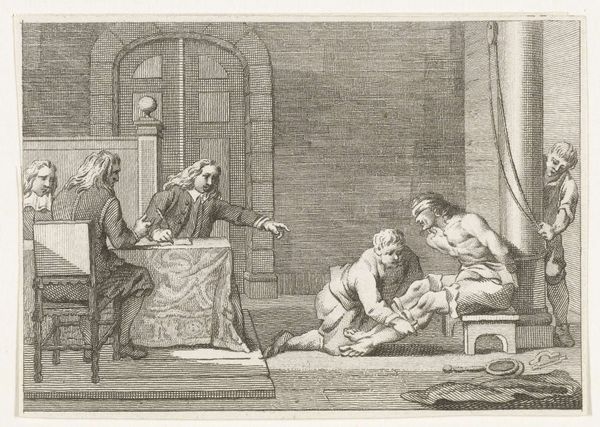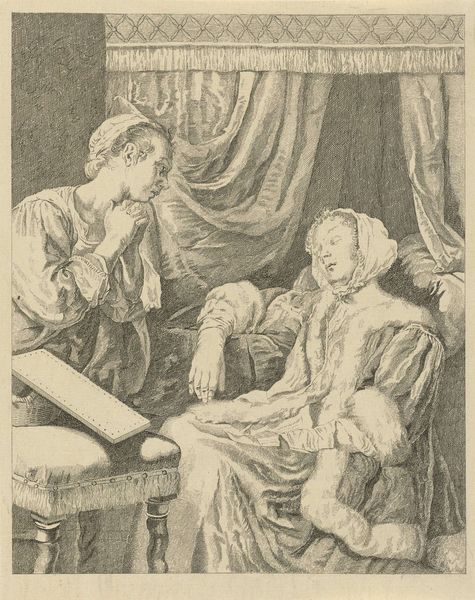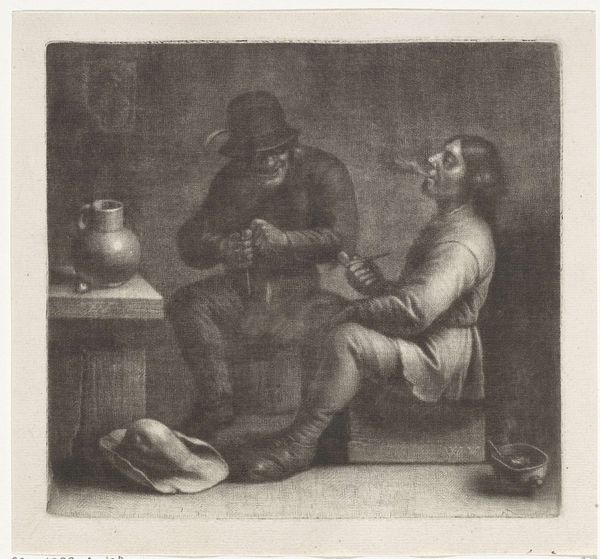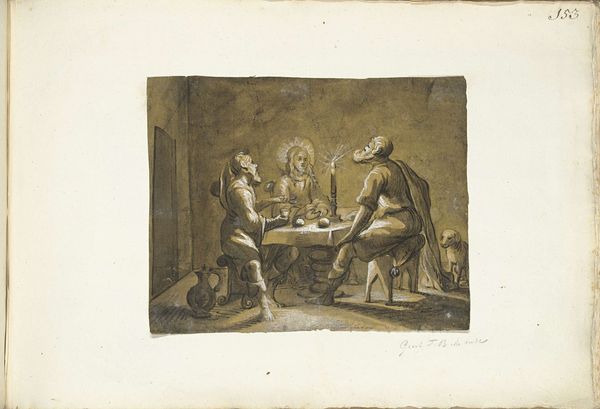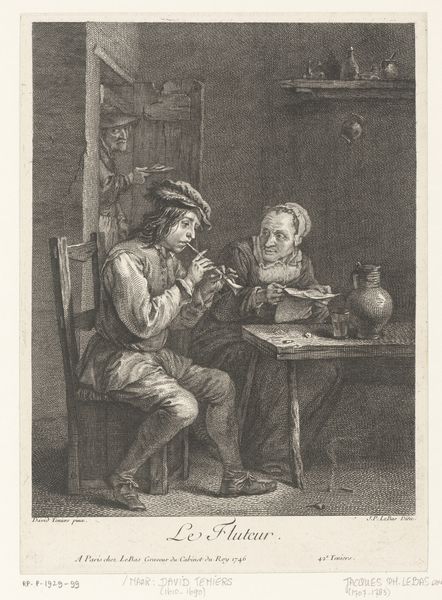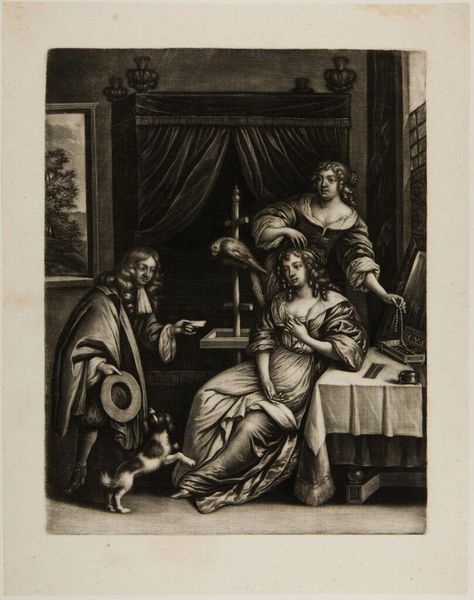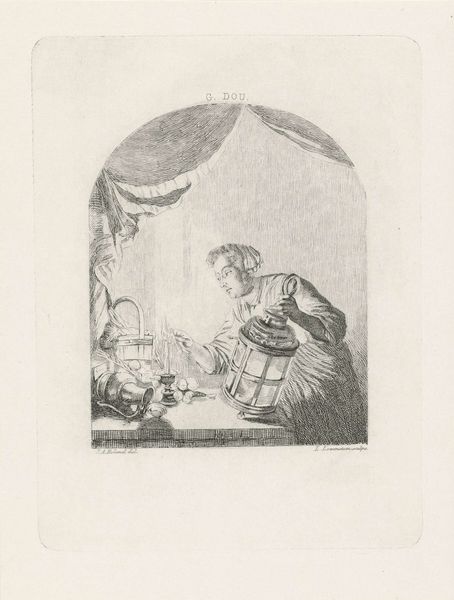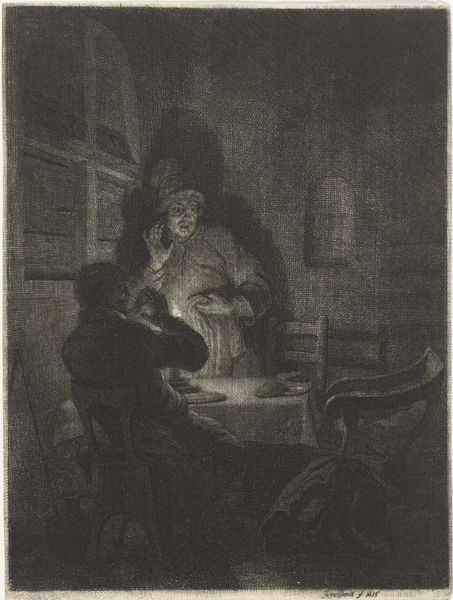
Dimensions: height 93 cm, width 113.6 cm, thickness 3.4 cm, height 101.6 cm, width 113.6 cm, depth 9.8 cm
Copyright: Rijks Museum: Open Domain
Curator: Welcome. We're standing before Adolph Tidemand’s oil on canvas painting, "The Sick Child," completed in 1851 and held here at the Rijksmuseum. Editor: Immediately, the gloom grabs me. It feels less like observation, more like eavesdropping on profound sorrow. That dimly lit interior just sucks you in. Curator: Precisely. Notice the prominent use of light and shadow. That single light source casts long, heavy shadows that contribute to the scene’s emotional weight. Light often signifies knowledge, divinity and goodness and here the single candle illuminates an ill child’s mother and father. In its symbolic context, light is meant to illuminate the value of human life. Editor: Absolutely. The light almost spotlights the mother’s face, highlighting her anguish. Her expression is the painting’s real center – she looks so…lost. Even though they both appear downcast, the composition, with the figures in each half, suggests different responses: a stoic, closed-off acceptance versus an open, painful awareness. Curator: That difference may underscore a conventional approach to the parents: we perceive the mother tending the child, internalizing the situation, versus a patriarchal idea that requires the man be seen stoicly distant, physically isolated, removed from direct caring roles. And consider the broader cultural memory it invokes; infant mortality was heartbreakingly common at the time, an everyday dread for many families. This visual echoes that trauma. Editor: Yes. This is genre painting with heavy subject matter, rooted in social realities, rather than a sanitized heroic or classical tableau. And Tidemand’s decision to depict the figures realistically, avoiding idealization, amplifies that sense of genuine human pain. Curator: He’s walking a tightrope here between Romanticism and Realism. The romantic inclination comes from its emotive charge but grounds that charge with social context. Editor: It’s not just about portraying an aesthetic ideal, but capturing truth—however raw. It reminds us of how deeply art can connect with the anxieties of its time. Curator: Ultimately, this is why a work like this retains such power. Despite the passing of centuries, it echoes basic human experiences like compassion, helplessness, and the will to love and protect our children. Editor: A somber but beautifully rendered reminder of our shared vulnerabilities. Makes you want to hold your loved ones tighter.
Comments
No comments
Be the first to comment and join the conversation on the ultimate creative platform.

